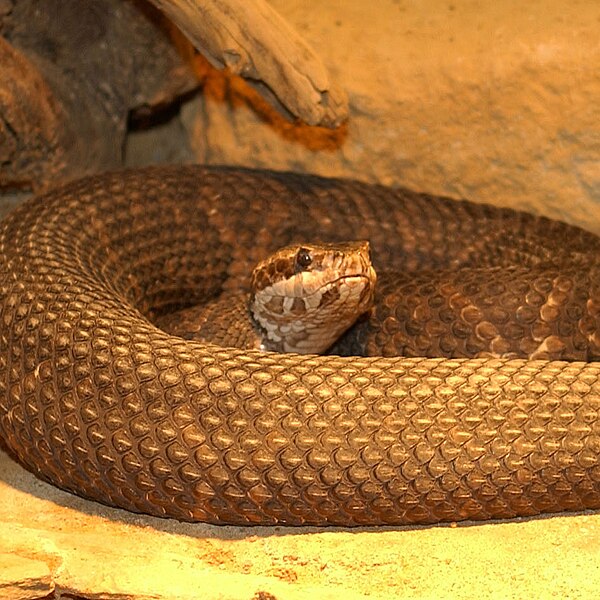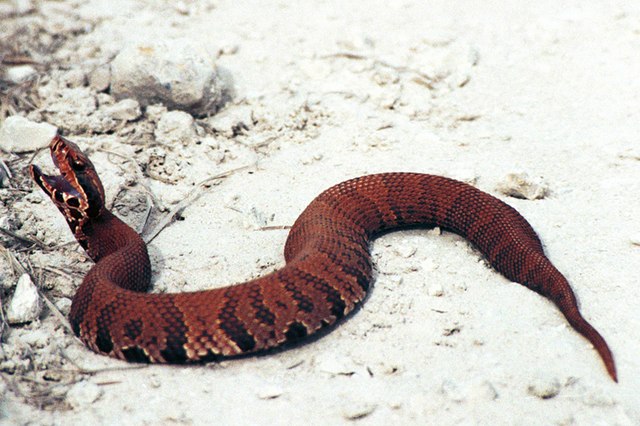The Florida cottonmouth is a species of venomous snake, a pit viper in the subfamily Crotalinae of the family Viperidae. The species is endemic to the United States, where it occurs in southern Georgia and the Florida peninsula in nearly every type of wetlands in the region, including brackish water and offshore islands. However, it is not entirely dependent on water and is occasionally encountered as far as a mile from surface water. Agkistrodon conanti venom is very hemolytic and known to cause relatively extensive necrosis compared to many snake venoms, and can sometimes be lethal with a 17% mortality rate. It is often confused with harmless watersnakes (Nerodia) and other semi-aquatic species with which it shares its habitat.
Florida cottonmouth
Top row: northern cottonmouth; bottom row, Florida cottonmouth; although the facial patterns are variable in both species, the overall lighter, cleaner face markings are characteristic of the Florida cottonmouth and the two dark vertical lines on the snout are diagnostic of the species)
Geographic distribution of the two species of cottonmouth, Agkistrodon piscivorus and Agkistrodon conanti; black dots represent the type localities
A. conanti, Big Cypress National Preserve, Florida
Agkistrodon howardgloydi is a species of venomous snake, a pit viper in the subfamily Crotalinae of the family Viperidae. The species is endemic to Central America. It is most commonly called castellana, but it has also been called the southern cantil, Gloyd's moccasin, and a number of other colloquial names. It is a rare species with a relatively small geographic distribution in the tropical dry forest on the Pacific coast of Honduras, Nicaragua, and extreme northwest Costa Rica. A. howardgloydi is a stout, medium-sized snake with a maximum total length of 96 cm (38 in). It is a viviparous species, with females giving birth in the rainy season from May to August. No clinical reports on envenomation had been published, but laboratory texts and analysis indicate the venom is highly toxic and similar to its close relative Agkistrodon bilineatus, and potentially lethal.
Distribution of the Southern Cantil (Agkistrodon howardgloydi), the black dot represents the type





